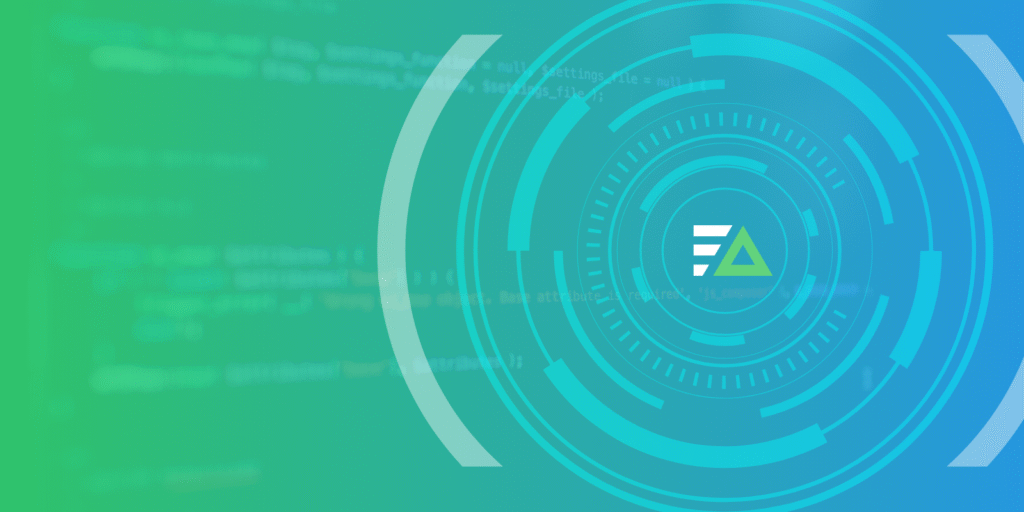In today’s fast-paced software landscape, observability is no longer just a production concern. Observability shift left means weaving observability practices into the earliest stages of development, helping teams spot issues long before code reaches production.
But why is this change happening now, and what ripple effects does it create across the development lifecycle?
In this article, we will break down the reasons behind the shift and explore the real-world consequences it brings for teams aiming to build faster, better, and more resilient software.
To really understand why this change matters, let’s first look at what it means when we say observability is shifting left.
What Does It Mean to Shift Observability Left?
In software development, shifting left means tackling important tasks like testing or security much earlier in the process. Instead of waiting until the final stages, teams work to find and fix problems while the software is still taking shape. Catching issues early helps avoid bigger headaches later and keeps projects moving forward with fewer surprises.
Observability is the ability to understand what is happening inside a system based on the data it produces, such as logs, metrics, and traces. Observability gives developers and operations teams the insights they need to monitor performance, find bugs, and troubleshoot problems quickly.
When you combine these two ideas, you get shift left observability. This means bringing observability into development and testing, not just saving it for when the software goes live. Developers can see how their code behaves right from the start, making it much easier to spot performance issues, bottlenecks, or bugs before they grow into bigger problems.
Shift-left observability brings several key advantages:
- Early feedback: Developers get immediate insights into how their code performs as they build it.
- Real-time debugging: Teams can connect to their live applications using familiar development tools.
- Faster issue detection: Problems are caught before they move downstream into staging or production.
- Reduced rework: Early fixes mean less time spent troubleshooting later in the cycle.
By enabling developers to connect to their live applications from their existing tools, shift-left observability shortens feedback loops and speeds up the entire development process.
Now that we understand what shift-left observability is, let’s explore why teams are making this move earlier in the development process.
Why Observability Is Shifting Left: 6 Significant Reasons
Software teams today face growing pressure to deliver faster, better, and more reliable applications. As a result, many are adopting shift left observability to improve how they build and manage software from the very beginning. Here are some of the biggest reasons behind this shift:
1. Early issue detection
Finding problems early saves time and avoids major disruptions later. For example, a developer working on a checkout feature can immediately catch a slow database query during unit testing instead of discovering it during live user transactions.
2. Faster development cycles
With real-time feedback from observability tools, developers spend less time guessing and more time improving. Instead of waiting for code to move through QA and staging, they can spot issues during the coding process and keep projects on schedule.
3. Reduced costs
Fixing bugs during development is way cheaper than fixing them after deployment. By catching problems before they escalate, shift-left observability helps teams avoid expensive hotfixes, incident responses, and technical debt.
4. Enhanced user experience
When an application runs well from the start, it leaves a strong first impression. By using observability data early in development, teams can catch performance issues ahead of time and deliver faster load times and a smoother experience for users.
5. Improved software quality
Continuous monitoring during development helps create more stable, reliable releases. Instead of treating observability as a safety net after launch, teams use it as a guide to build better code from the start.
6. Increased collaboration
Shift-left observability brings developers, testers, and operations teams closer together. Everyone works from shared data and metrics, improving communication and speeding up problem-solving. For example, a QA engineer can flag an emerging memory leak during a pre-production test, and a developer can fix it immediately using real-time trace data.
By focusing on observability innovation earlier in the lifecycle, teams not only build better software but also work together more efficiently.
While the reasons to shift left are clear, it is important to also consider the broader consequences, both the benefits and new challenges that come with it.
Consequences of Shifting Observability Left
Adopting shift left observability does more than improve early development. It also creates lasting organizational impacts that shape the entire software delivery process. By moving observability practices closer to the start of development, teams unlock several important advantages:
1. Faster bug fixes
When issues pop up during development, teams can jump on them right away. Developers do not have to wait for QA testing or production monitoring to spot problems. Fixing things early keeps releases on track and helps avoid the frustration and backlog that come from last-minute fixes.\
2. Improved software reliability
Continuous observability during development helps uncover hidden risks, such as memory leaks or scaling bottlenecks, long before customers experience them. As a result, applications are more stable and better equipped to handle real-world usage.
3. Enhanced user experience
Stable, high-performing software translates directly into better experiences for users. By detecting and resolving performance issues early, teams can deliver faster load times, smoother interactions, and fewer incidents, which in turn drives higher user satisfaction and retention.
4. Reduced development costs
Addressing bugs and performance issues early avoids costly late-stage rework and emergency patches. Organizations also save on operational costs by reducing the number of incidents that require post-deployment firefighting.
5. More resilient software
Building resilience from the start is easier than retrofitting it after deployment. Observability data collected during development highlights potential failure points, allowing teams to harden their systems and improve fault tolerance before any real incidents occur.
6. Faster time to market
Shorter debugging cycles and fewer unexpected setbacks mean teams can release features and products faster. Shift-left observability streamlines the entire development workflow, helping organizations meet market demands and customer expectations more efficiently.
By embracing shift-left observability, organizations position themselves to provide better software at a faster pace and lower cost, while improving the experience for both users and developers. However, making this shift work in practice requires thoughtful changes to tools, workflows, and team habits.
The shift sounds like a win across the board, but how exactly are teams making this happen without adding chaos?
How Teams Are Putting Shift-Left Observability Into Practice
Making shift left observability a reality requires more than just a mindset change. Teams need to adopt practical strategies that bring observability into the daily flow of development, not just production.
Some of the most effective approaches include:
- Integrating observability into CI/CD pipelines: Observability should be embedded into every build and deployment stage. This ensures that performance data, logs, and error traces are available early, making it easier to catch problems before code progresses through the pipeline.
- Using developer-friendly observability tools: Tools that fit naturally into a developer’s workflow, like IDE extensions, lightweight agents, and real-time dashboards, make it easier to keep an eye on applications without slowing things down. When observability is easy to access, teams can catch problems faster and spend less time debugging.
- Adopting live debugging and real-time monitoring practices: Developers can connect to live applications while they are still building and testing. Seeing how the code behaves in real-world conditions helps teams spot issues early and confirm fixes without having to wait for a full production rollout.
Solutions like Edge Delta align closely with this philosophy. By enabling data collection, automated anomaly detection, and real-time insights earlier in the lifecycle, Edge Delta helps teams move observability left without adding complexity or slowing down development.
Through these strategies, organizations are turning observation shift ideas into everyday practices that result in more reliable, high-performing software.
As shift-left observability gains momentum, it’s also driving major innovation in the way observability tools are designed and used.
The Future of Observability Innovation
As shift left observability becomes the norm, a new wave of observability innovation is reshaping how teams approach software reliability. The future points toward even smarter, faster, and more automated systems designed to help developers stay ahead of problems before they impact users.
Some of the emerging trends include:
More AI-driven observability
Artificial intelligence helps teams surface anomalies, detect patterns, and predict failures before they happen. Machine learning models are being trained on observability data to automate insights that once required manual investigation.
Autonomous root cause analysis
Instead of simply alerting teams when something goes wrong, next-generation observability tools will be able to pinpoint the likely cause ithout human intervention. This shortens response times and reduces the workload on engineers.
Smarter alerting based on early-stage behaviors
Future observability platforms are moving away from basic threshold-based alerts. They are starting to analyze subtle shifts in system behavior during development and testing, allowing teams to fix problems before they grow into full-scale incidents. These kinds of innovations make it easier for teams to shift observability left without adding extra work or unnecessary complexity.
Teams that move early toward shift-left observability will be in a much stronger position to deliver faster, more reliable, and higher-quality software.
Final Thoughts: Why It Matters More Than Ever
The move toward observability shift left is more than just a trend. It reflects a deeper change in how modern teams build and deliver software. By integrating observability early, organizations can catch issues sooner, improve collaboration, and create stronger, more resilient systems that stand up to real-world demands.
Adaptability is critical in today’s fast-moving environment. Teams that embrace shift-left practices are better equipped to innovate quickly, respond to challenges, and meet user expectations without sacrificing reliability. Observability is no longer just a tool for production troubleshooting. It is a key part of empowering developers to build better software from day one.
As the pace of software delivery continues to accelerate, early and continuous observability will be a defining factor for teams that want to stay competitive. Organizations that invest in shift-left observability today are setting themselves up for greater agility, higher-quality products, and long-term success.
FAQs on Observability Left Shift
What is shift left observability?
Shift left observability means integrating monitoring, logging, and tracing practices early in the software development lifecycle to catch and fix issues before deployment.
How does observability innovation help development teams?
Observability innovation uses technologies like AI-driven insights and autonomous root cause analysis to help teams detect problems faster and build more reliable software.
What are examples of observability shift in software development?
Examples of observability shift include embedding observability tools into CI/CD pipelines, using live debugging during development, and analyzing pre-production performance data






